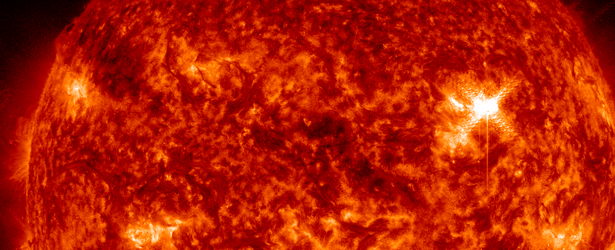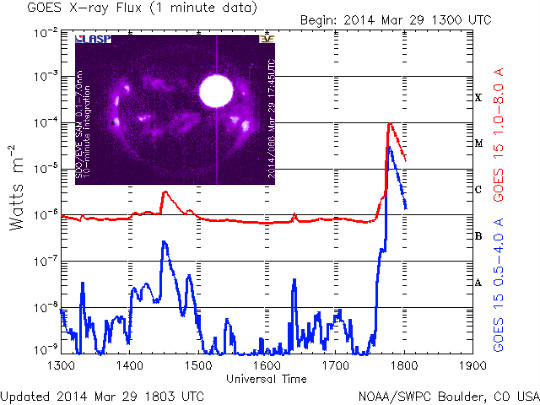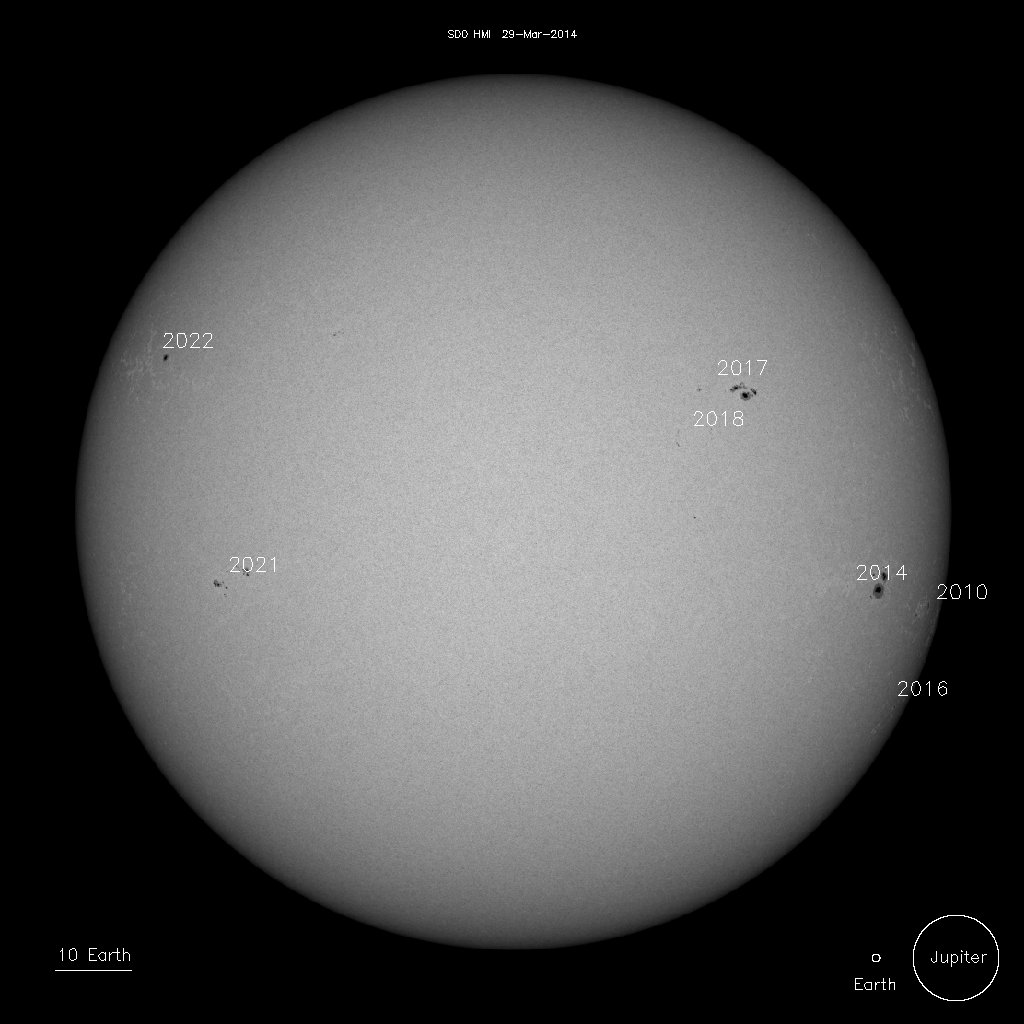Major solar flare measuring X1.0 erupted from Region 2017

Major solar flare measuring X1.0 erupted from Region 2017 on March 29, 2014. This event started on 17:35, peaked at 17:48 and ended at 17:54 UTC. Area of impact consists of large portions of the sunlit side of Earth, strongest at the sub-solar point. Wide area blackout of HF (high frequency) radio communication for about an hour.
A 10 cm Radio burst event with peak flux of 360 sfu was observed from 17:45 – 17:48 UTC.
Additionally, a Type II radio sweep was observed at 17:53 UTC with estimated velocity 4 508 km/s! Type II emissions occur in association with eruptions on the sun and typically indicate a coronal mass ejection is associated with a flare event.
This region already had 2 moderately strong eruptions in last 24 hours – M2.0 19:18 UTC and M2.6 at 23:51 UTC on March 28, 2014.
Most of the CME is directed north, but there appears to be a faint Earth-directed component that could deliver a glancing blow to our planet's magnetic field on April 1/2.
***
Space Weather Message Code: SUMX01
Serial Number: 98
Issue Time: 2014 Mar 29 1821 UTC
SUMMARY: X-ray Event exceeded X1
Begin Time: 2014 Mar 29 1735 UTC
Maximum Time: 2014 Mar 29 1748 UTC
End Time: 2014 Mar 29 1754 UTC
X-ray Class: X1.0
Optical Class: 2b
Location: N11W34
NOAA Scale: R3 – Strong
Potential Impacts: Area of impact consists of large portions of the sunlit side of Earth, strongest at the sub-solar point.
Radio – Wide area blackout of HF (high frequency) radio communication for about an hour.
***
Space Weather Message Code: ALTTP2
Serial Number: 919
Issue Time: 2014 Mar 29 1821 UTC
ALERT: Type II Radio Emission
Begin Time: 2014 Mar 29 1753 UTC
Estimated Velocity: 4508 km/s
Comment: Associated with X1/2b event from Region 2017. Also associated with Castelli U radio Burst with 110,000 sfu burst on 245 MHz.
Description: Type II emissions occur in association with eruptions on the sun and typically indicate a coronal mass ejection is associated with a flare event.
***
Space Weather Message Code: SUM10R
Serial Number: 613
Issue Time: 2014 Mar 29 1821 UTC
SUMMARY: 10cm Radio Burst
Begin Time: 2014 Mar 29 1745 UTC
Maximum Time: 2014 Mar 29 1746 UTC
End Time: 2014 Mar 29 1748 UTC
Duration: 3 minutes
Peak Flux: 360 sfu
Latest Penticton Noon Flux: 146 sfu
Description: A 10cm radio burst indicates that the electromagnetic burst associated with a solar flare at the 10cm wavelength was double or greater than the initial 10cm radio background. This can be indicative of significant radio noise in association with a solar flare. This noise is generally short-lived but can cause interference for sensitive receivers including radar, GPS, and satellite communications.
This page will be updated once more information is available.

Sunspots
There are currently 7 numbered sunspot regions on the Earth side of the Sun.

Sunpots on March 29, 2014. Image credit: NASA SDO / HMI
2010 S14W80 203 80 9 DAO 10 BG
2014 S15W46 169 290 15 EHI 22 BG
2016 S28W77 200 30 5 CRO 3 B
2017 N10W20 143 150 9 DAO 14 BD
2018 N03W16 139 30 6 CRO 8 B
2021 S15E50 73 40 4 DAO 7 B
2022 N16E64 59 60 3 HSX 1 A
Featured image: NASA SDO AIA 304 – March 29, 2014 at 17:48 UTC

Chile
Now watch for major earthquake or volcanic eruption to take place in the next two days